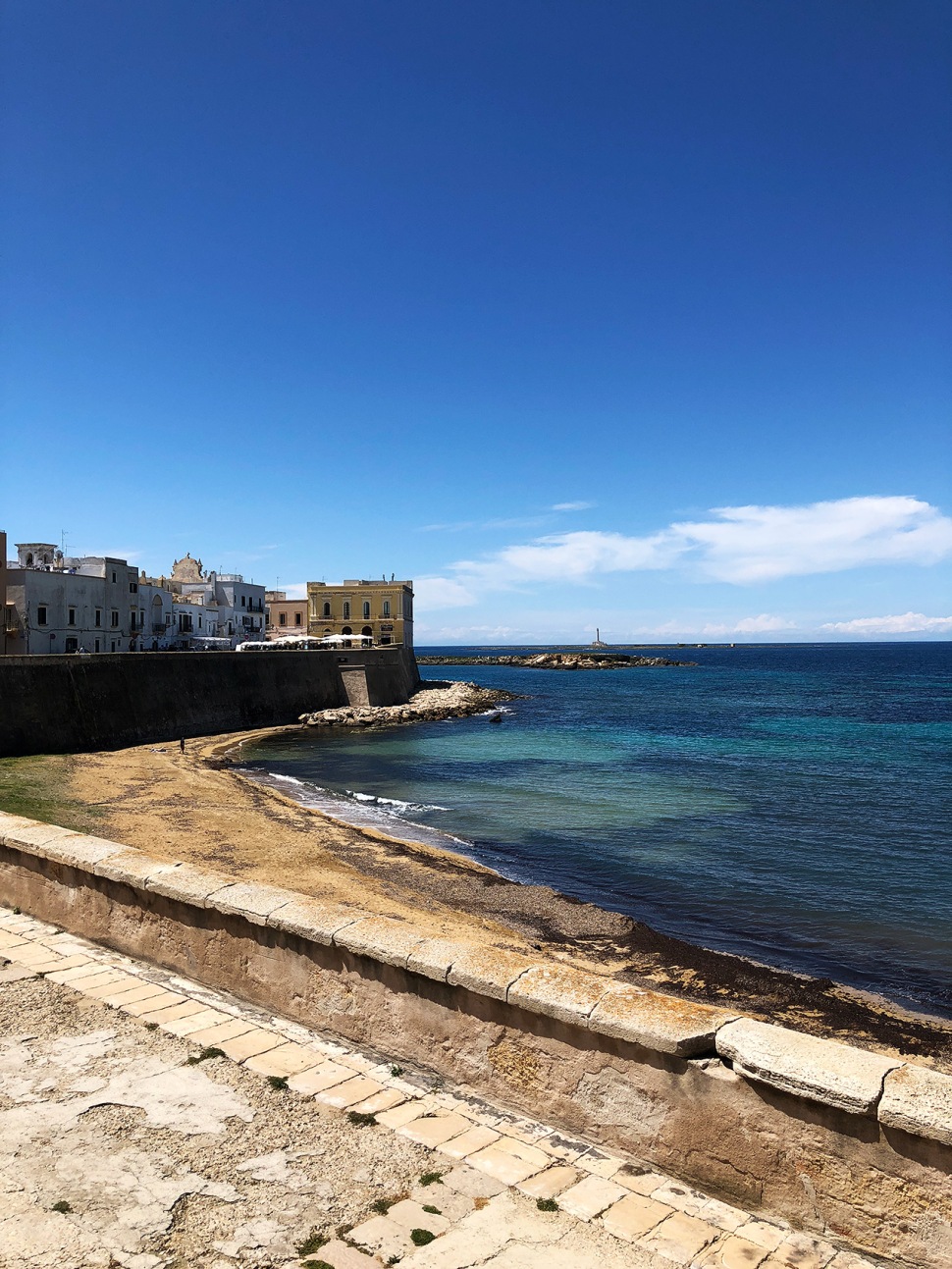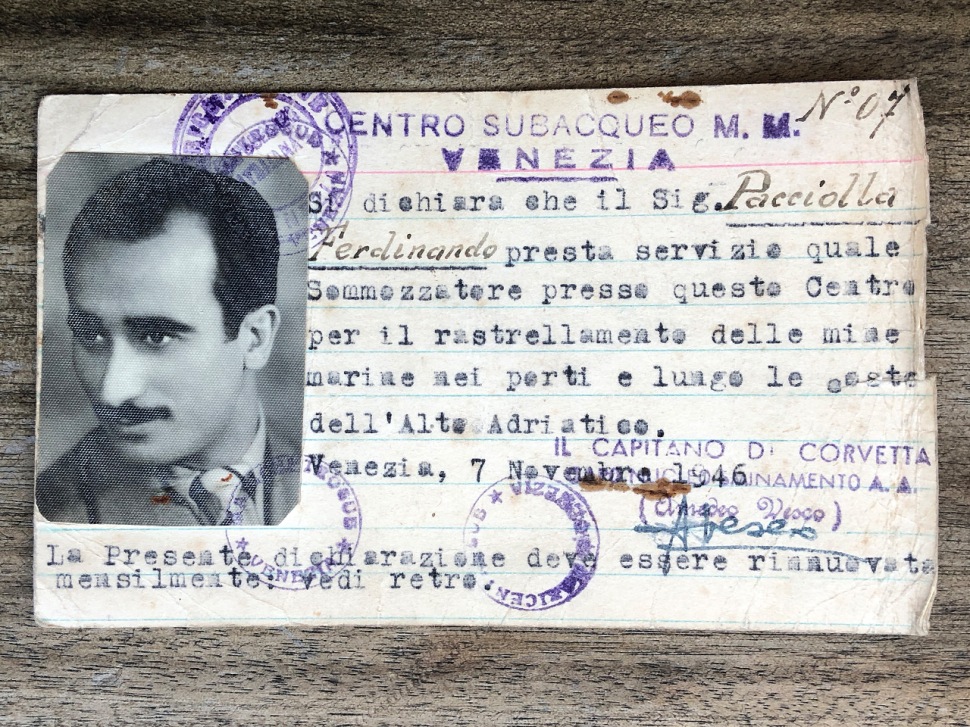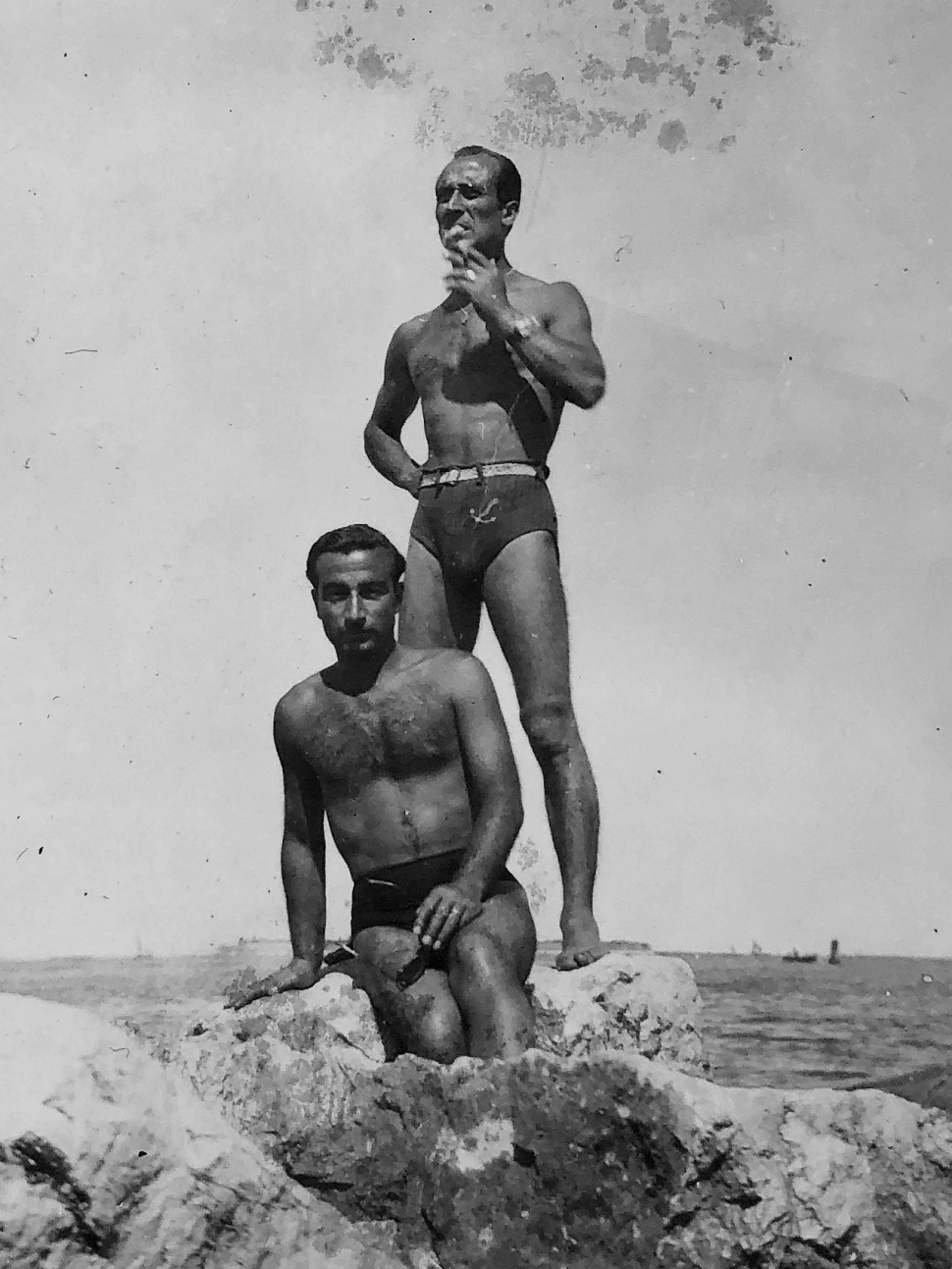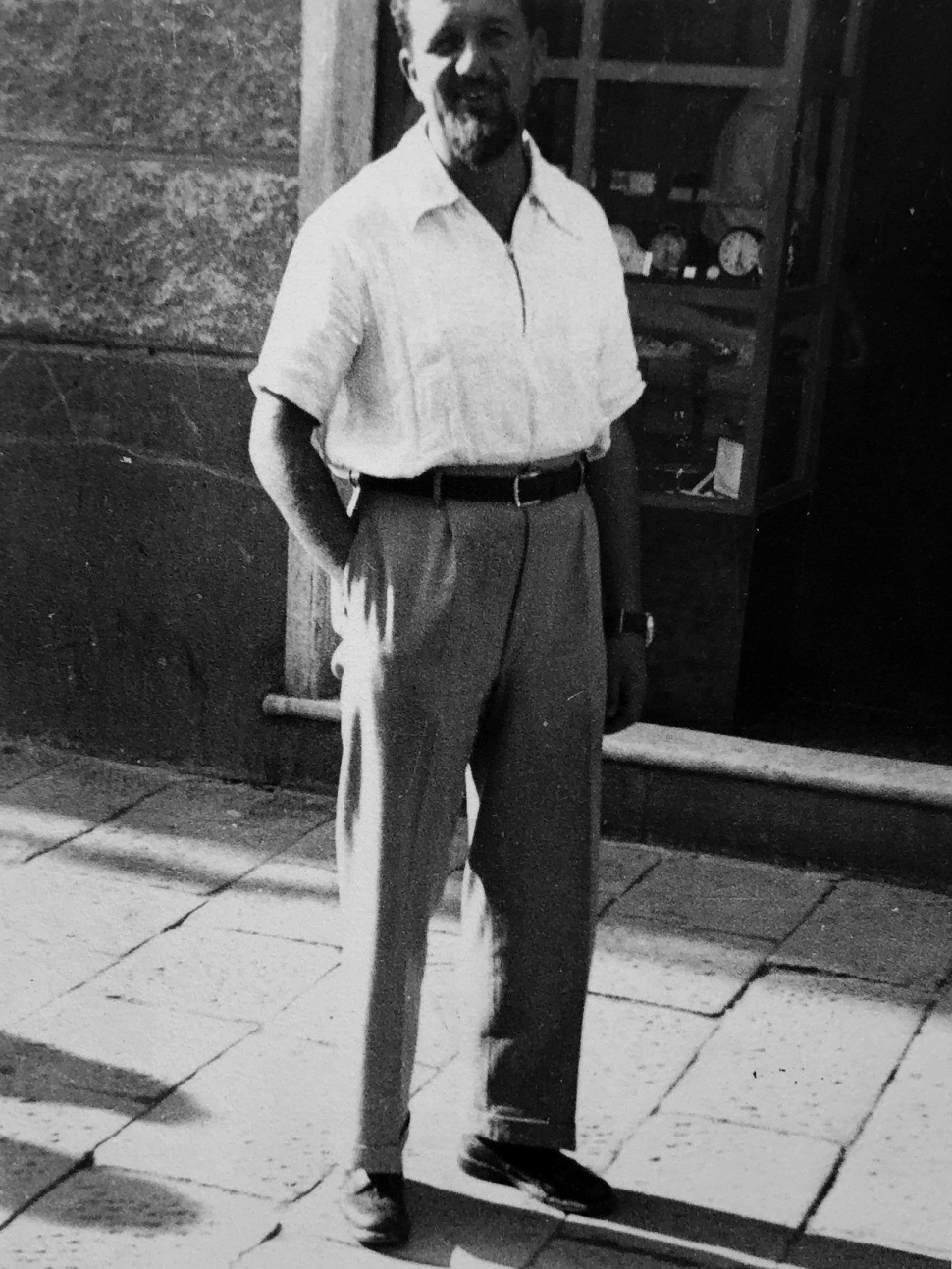Going where nobody else has gone before… that’s what Perezcope is all about. I learned early on, when it comes to watches, the stories told by vintage dealers are mostly nonsense, invented or embellished to sell a product.
To get to the bottom of watch related history it is indispensable to hear the stories first hand, like I did with Maria Teresa Panerai and Bob Barth.
One of the most exciting Panerai stories is certainly the whole Egypt chapter. A story barely scratched on the surface, and in addition, mostly originating from dealers with lots of fantasy who used the story solely for the purpose of selling watches.
In late 2017, I had the chance to get in touch with the son of Ferdinando Pacciolla. Pacciolla was the very Decima Flottiglia MAS member who in 1948 – in midst of the Arab-Israeli War that followed the proclamation of the Israeli state – went to Egypt to train the first Egyptian special forces for King Farouk. Pacciolla’s son Maurizio was happy to see someone finally acknowledging the important role his father played during and after WW2. After receiving many interesting pictures and documents, I immediately started working on a new article. The story however, turned out to be more complicated than expected and the many gaps prevented me from publishing it.
This year in May, I travelled to Geneva to take a closer look at some interesting timepieces offered at the spring auctions. The picture below shows two Axis Powers timepieces from WW2. A Seikosha Tensoku “Kamikaze” (left) and a Rolex 3646 made for Panerai.
 .
.
While in Geneva, Pacciolla’s son unexpectedly contacted me and inquired on the status of his father’s article.
 .
.
When I told him I had trouble putting the story together due to an number of gaps and that I was in Geneva at the moment, Pacciolla’s son invited me to visit him in Gallipoli and go through the hundreds of historical documents painstakingly preserved by his father, many of which are written in Arab. This, of course, was an offer I could not refuse!
I postponed my annual trip to Florence and off I went to Southern Italy.
Gallipoli is a small town located in the heel of the Italian boot. There are no direct connections. To get there from Geneva, I had to travel by train to Milan Malpensa Airport and take a flight to Brindisi.
 .
.
Out of convenience, I flew to Brindisi with Ryanair. I think this was the first time ever I flew with them, and certainly the last. Although I booked priority seats with all extras including baggage, etc, Ryanair tried to charge me again for my checked-in suitcase. In addition, if you don’t check-in online, they will charge you an extra fee of EUR 55.00 plus tax at the counter. Ryanair, you never get a second chance to make the first impression.
In Brindisi, I rented a car to drive the rest of the journey to Gallipoli, which is around 80 km away.
Gallipoli is a coastal town in the Ionian Sea. The moment I left the highway and saw the intense dark blue colour of sea, I had to stop to enjoy the awesome view for a while.
 .
.
In the past, Gallipoli had the largest olive oil market in the world. Ferdinando Pacciolla was born in Gallipoli. He was a true son of the sea and it is no surprise he soon became a sailor.
 .
.
Maurizio waited for me at the harbour and proudly showed me around before inviting me for lunch at his friend’s restaurant on the sea promenade.
 .
.
Gallipoli is known for its delicious seafood.
 .
.
Meeting Maurizio in person was an amazing experience. We have been in sporadic contact for quite some time and we both are fascinated by Ferdinando Pacciolla’s life. Ferdinando died of lung cancer when Maurizio was 4 years old. Maurizio grew up with his mother and his younger sister in Milan, where they struggled financially as the Italian government denied the family a pension for Pacciolla’s service to the country.
After several courses of delicious seafood and fish, accompanied by a fruity white wine from the region, Maurizio suggested to drive to his place as he was excited to show me his father’s documents. I knew he had many documents but when I finally saw the two large storage boxes in which the papers and objects are kept, my jaw literally dropped.
Maurizio started pulling paper after paper out of the boxes. Diaries, photos, contracts, passports, medals, etc., etc. What a time capsule!
I felt like a kid in a candy store and started taking as many pictures as possible. Soon I realized it would take several months to properly scan through all the documents and catalogue every single item. It seems Ferdinando Pacciolla was fully aware of the historical importance of what he was doing. He obviously wanted to make sure everything is preserved for future generations to be discovered.
As mentioned, Ferdinando Pacciolla was a son of the sea. Before becoming a member of the secret unit Decima Flottiglia MAS, Pacciolla was a pilot in the Port of Genoa. His job was to manouver large merchant ships entering and exiting the harbour.
The following document is an award presented to Pacciolla for successfully passing the basic course of the C.R.E.M. (Corpi Reali Equipaggi Marittimi) school in Pola.
 .
.
In Dec. 1942, Pacciolla volunteered to become a member of the Decima Flottiglia MAS, more specifically of the Gruppo Gamma frogmen.
When Italy officially withdrew from the war on Sept. 8, 1943, Pacciolla was in the barracks of the Decima Flottiglia MAS in Muggiano, La Spezia. The barracks were soon surrounded by German forces in tanks who demanded the immediate surrender of the unit. Commander Borghese left it up to each sailor whether he wanted to stay or leave. Most members left and enrolled with the Allies in the south instead. The original Decima Flottiglia MAS ceased to exist that day. Pacciolla left as well but soon came back after Borghese contacted him.
To retain some sort of control over the chaotic situation and protect Italian interests, Borghese opted to stay loyal to Nazi Germany. Subsequently, Borghese rebuilt the unit but kept the name. The famous X MAS logo with skull and rose was introduced with the new unit. The original Decima Flottiglia MAS was a secret unit and had no special insignia.
The next picture shows Pacciolla’s X. Flottiglia MAS ID card from Nov. 1943 signed by Commander Junio Valerio Borghese.
 .
.
In late May 1944, Pacciolla decided to leave the Nazi-occupied territory as he had killed and injured several German soldiers accused of raping young Italian women. Pacciolla asked for sick leave due to problems with his lungs. His plan was to go to Rome and later Pescara in order to flee by boat to the liberated town of Brindisi where the official Italian government was located. While in Rome, the Allies broke through the heavily fortified Gustav Line. German forces declared Rome an open city and retreated. The Allies entered the Eternal City on June 4, 1944. Pacciolla’s plan to cross the front was no longer necessary as the front had already crossed him.
After several interrogations, Pacciolla enrolled with Mariassalto and the Allied forces. He developed a plan to protect the important Port of Genoa, which he knew in and out, and was trained in parachuting. Prior to his deployment, he was arrested at an Allied check point and the mission took place without him.
After the war, Pacciolla was hired to clear the port of Venice from German mines. The following ID card from Nov. 1946 is signed by Amedeo Vesco. Just recently, Amedeo Vesco’s 6152 was sold for EUR 226,000 at Artcurial in Paris.
 .
.
The next picture shows Pacciolla in hero pose. On his wrist his Rolex-made Panerai watch.
 .
.
Another picture of Ferdinando Pacciolla from 1947. Clearly visible on his wrist the Rolex-made Panerai watch.
 .
.
In June 1948, an Egyptian Delegation led by Amin Fahim, secretary to King Farouk, established contact with Pacciolla and hired him to create a secret frogman school in Alexandria. The picture below shows a map of Alexandria found among Pacciolla’s documents.
 .
.
It appears that Ferdinando Pacciolla participated in some form in the first Arab-Israeli War from 1948. He was awarded the Medalyet Falasteen or Egyptian Palestine Medal, which was given to Egyptian armed forces who served during the conflict. Depicted on the medal is King Farouk.
 .
.
For his services to Egypt, Ferdinando was also awarded the title Knight of the Order of the Nile 5th Class in 1951.
 .
.
The next picture alone was well worth the trip. It was taken in 1951 and is simply stunning. It shows Ferdinando Pacciolla with the daughter of a friend. On Pacciolla’s wrist his Rolex-made 3646.
 .
.
In April 1954, Pacciolla’s contract with the Egyptian Ministry of War was terminated. It appears that Pacciolla remained in Egypt and worked for an Italian company.
 .
.
A bit later, Junio Valerio Borghese sent Pacciolla a copy of his book Decima Flottiglia MAS to Egypt. The next picture shows the personal dedication.
 .
.
In late 1954, Pacciolla returned to Italy. Since dial and hands of his Rolex-made Panerai watch were no longer luminous, Pacciolla brought his watch to the Orologeria Svizzera in Florence to have it serviced.
 .
.
In early 1956, Pacciolla worked for two months in Libya.
 .
.
In July 1956, in midst of growing tensions with the West, Egypt nationalized the Suez Canal and closed the Straits of Tiran to all Israeli ships. In consequence, Egypt was attacked by a secret alliance consisting of Israel, the United Kingdom and France. To render the Suez Canal useless, Egypt blocked the canal by sinking a number of ships at the entrance.
After the ceasefire, the important waterway was cleared with UN assistance. Pacciolla was an established expert in clearing operations and was hired to take part of the international clearing team.
 .
.
After this assignment, Pacciolla returned to Italy. In 1960, Pacciolla travelled again to Egypt and was immediately arrested for espionage. Before going to jail, he was stripped of all his belongings, including his beloved Rolex-made 3646. He spent the next four years in prison, where he was brutally tortured. His watch went lost.
The picture below is from Pacciolla’s photo album and shows Luigi Ferraro, the famous Gamma who single handedly sank two merchant ships and damaged one in Alessandretta, Turkey. According to Pacciolla’s son, Luigi was a good friend of his father.
Did you spot the watch on Luigi’s wrist? It’s a Rolex-made Panerai.
 .
.
This is it for now. I hope you enjoyed this little trip to Gallipoli. The vast amount of available documents and pictures will help shedding light on an obscure chapter of history. This report covers only a small part of the documents and pictures I was able to scan in the short time. After this overwelming trip, I am extremely excited to sit down and finish Ferdinando Pacciolla’s story as soon as possible.
Thank you so much Maurizio! This was an overwelming experience indeed.
 .
.
Thank you for your interest.

It reads like a crime story. Breathtaking! Thank you. Can’t wait for the continuation.
LikeLike
Avvincente… Quanta storia.. Che forza ricostruire tutto questo…. È quanto amore si evince.. Ognuno per il suo verso… L amore di chi ha scritto quest articolo per il proprio lavoro, l amore di Maurizio che ha custodito tutta questa vita senza averlo realmente vissuto il padre e l amore di Ferdinando verso tutto ciò che intraprendeva.
Aspetto la continuazione
LikeLike
Grazie di cuore…il senso vero dell amore per mio padre è espresso nel libro da me scritto in riconoscenza dell esempio trssmssomi von la sua straordinaria esistenza a me dedicata nella frase : ” …a mio figlio Maurizio, perché sappia quanto fece il suo papà affinché a lui non mancasse ciò che al papà mancò… ” 01-01-1967… grazie papà!
LikeLike
It is always a great pleasure to follow your outstanding stories. The community of Panerai enthusiasts (avoiding the word Paneristi in this context is intended) owes you a lot, since you’ve brought many important truths to daylight. Quite rare attitude in todays world of simple populism and “alternative facts”. I really recognize the hard work you must have spent on investigations and research. Even more I love the outcome of these efforts in form of your well structured stories. Thank you very much for your detailed, careful, clear and (mostly) proven preservation in many aspects of the Panerai history.
I love the brand mainly because of its absolutely unique, simple and timeless watch designs. Brand history was of low importance when I decided to own some pieces. Nevertheless, the stories about this company are so special, interesting and therefore valuable that it would be a shame to ignore it. Thanks for sharing your findings. It prevents me from depending on the many fairy tales, told by commercially motivated groups of people. The truth about Panerai beats fiction anyway. Thanks again, Jose!
LikeLike
Non conoscevo questa bellissima storia!
Che orgoglio per Maurizio, avere avuto un padre che ha contribuito a scrivere la storia del nostro Paese!
LikeLiked by 1 person
Interesting experience and writing
LikeLike
🙌🏼🙌🏼 great story!! The way it was told was breath taking! I couldn’t stop reading and wanted more!
LikeLike
Outstanding story and documentation. What kind of detective work would it take to find his watch again?
LikeLike